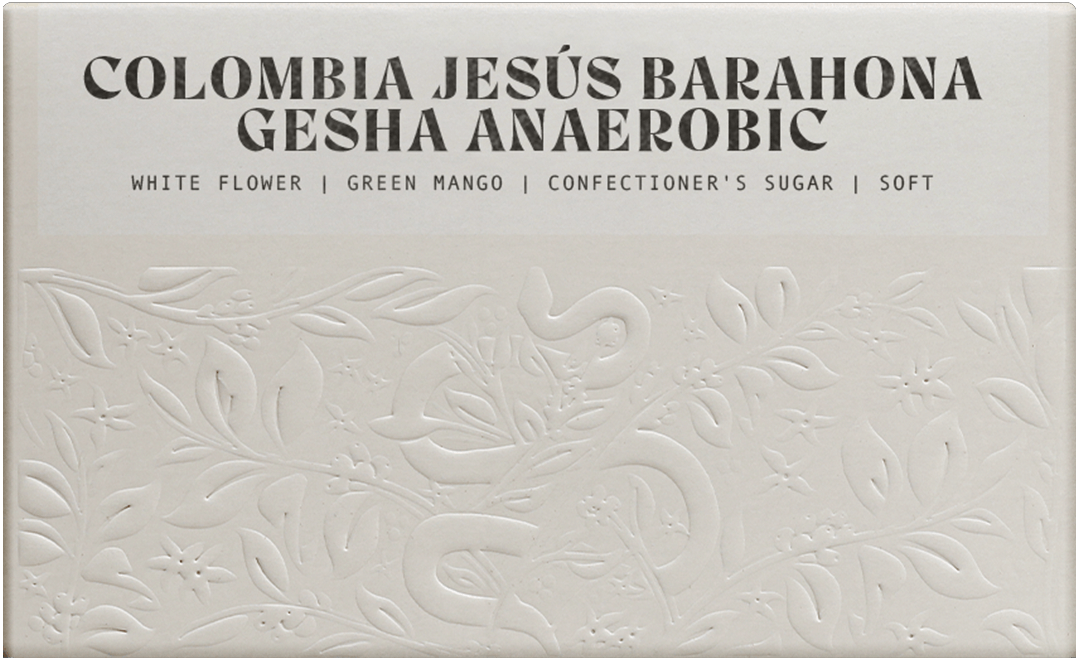Story
As a third generation coffee farmer, Jesús Barahona has seen many changes across his 40 year stint in coffee production. Located in Vereda Andes Alto, his four hectare farm primarily has produced classic Colombian varieties for it’s entire lifespan, with Gesha and Pink Bourbon being planted recently. As is the case with many producers, planting exotic varieties and implementing alternative processing methods has given them a way to sell their top lots for more money. Jesús Barahona sought out higher prices by planting Gesha and fermenting it anaerobically. With his keen focus on agronomy and processing, his coffee quality improved drastically, giving him market access to sell his coffees for higher prices than before.
ANAEROBIC PROCESSING
There are few leaps in the technique of processing coffee larger than the most recent trend of Anaerobic processing. This is oftentimes a technique of natural processing coffee, where whole cherries are fermented in a limited oxygen environment. The word Anaerobic is a catch-all term used more often than not to refer to a limited oxygen environment. Coffee cherries are subject to pre-fermentation before they are moved to a drying bed or patio. The extended fermentation often adds a winey or fruity note to the coffee. Throughout the world, we’ve seen this practiced in many ways, from adding cherries into a clean grainpro and tying the top for the night, all the way to stainless tanks with an airlock on the top to slowly let out carbon dioxide caused by the microbes at work. There are many who are working to understand and better control this process to gain clarity on what is really going on with limited oxygen fermentation.
DRY MILLING
Once the coffee is picked, processed, and dried, it still has a necessary step before it's ready for export. Dried coffee, which we refer to as parchment. The final processing stage is not only to remove the dried layer of parchment from the seed, but it's also a stage in many levels of quality checks that coffee passes through in Colombia. The first stage is hulling and de-stoning, removing the parchment as well as any chips of drying beds that may have gotten into the coffee. Parchment is separated by air and used as a fuel source for other stages of milling that may require heat. Once the seeds are hulled, they're then separated by size or screen size. The screens they pass through, and the final prep size is dictated by contract specifications. From sizing, the coffees are then separated by density, as a final check that the exportable green coffee is homogeneous before it gets to the roaster. Density is separated on a densimetric table. This is a clever bit of technology that allows more dense seeds to climb up, while the less dense coffees are separated off the bottom. Density is extremely important when it comes to roasting, as less dense coffees tend to roast at a different rate than denser, leading to uneven roasts. The final stage is a visual check, done by an optical sorter. Coffee is passed at a high rate of speed through a vertical chute, where cameras capture color and visual info about the coffee, quickly separating seeds that don't meet standards with a puff of air. As technology continues to evolve in coffee, preparation gets better and better, improving cup quality by many points.



